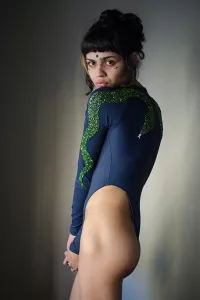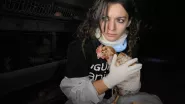The transgender community is a group of humans that defy a bunch of standards, norms and expectations of society, but are often looked upon as disturbers of these norms. They are perceived as an insignificant minority group, with complex needs, that require a lot of attention for issues that are hard to understand for people who can’t relate. As with many things, these negative feelings towards something we don’t understand comes from a lack of (correct) information in the first place, and perhaps even a lack of mental flexibility from the side of the majority.
The first step in understanding the complexity of the situation is not getting lost in the terminology. The western taxonomy system is mainly based on clearly defined dualities (male - female), with very little margin for flexibility. It is arguably easier to put everything in a box, that way there is no uncertainty. This is however a very poor representation of reality, which bears more resemblance with a sliding scale and thus contains lots of grey areas. But in order to explain why there are grey areas, it is easier to start off with a few concepts.
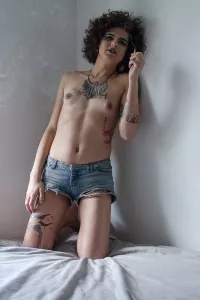
An important distinction to make is the difference between gender identity and gender expression.
- Gender identity is the personal sense of a person’s own gender. Someone’s gender identity can match with the sex they were assigned at birth or can differ from it.
- Cisgender is the term used for people whose gender identity matches the sex that they were assigned. The common assumption is that a person is cisgender, but we need to shift from the idea that it is the default setting.
- Genderqueer is used for people who do not identify with the gender they were assigned at birth, nor find themselves in the male/female dichotomy but rather in between or even completely outside of it.
Gender expression is about the attitudes, behaviours and appearances people adopt, which can reflect a person's gender identity, but this is not necessarily the case. A simple example of this is a woman dressed in a tuxedo, who identifies as a woman but has adopted a masculine gender expression by wearing these particular clothes. The same woman can later dress differently and adopt a feminine gender expression. Both expressions have no impact on her gender identity.
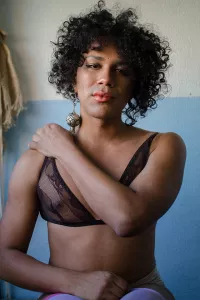
Michael G. Peletz, an anthropology professor, distinguishes 5 sets of phenomena on the spectrum regarding gender identity rather than the simplistic male-female dichotomy:
- Females and femininity.
- Males and masculinity.
- Androgyny (gender expression): combination of m. & f. characteristics in an ambiguous form; Intersex (gender identity): umbrella term used to describe a wide range of natural bodily variations. In some cases, intersex traits are visible at birth while in others, they are not apparent until puberty. Some chromosomal intersex variations may not be physically apparent at all.
- Transgender : people whose gender identity is the opposite of their assigned sex, and people who are not exclusively masculine or feminine (non-binary/genderqueer).
- Neutered/unsexed/ungendered, such as eunuchs.
He believes that these notions of different types of gender deeply affect our lives and reflect the values in society. Or in other words, how well we deal with people that don't fit in the male-female dichotomy says a lot about the level of forward thinking and compassion in our society.
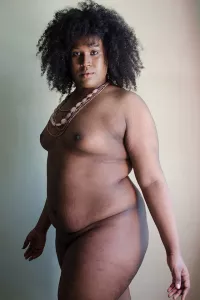
Sexual orientation refers to romantic or sexual attractions toward persons of the opposite sex or gender, the same sex or gender, to both sexes or more than one gender, or to no one. This has nothing to do with a person’s gender identity or expression, merely with the traits they are attracted to in others.
In conclusion, a person will identify with a specific gender identity regardless of the sex they were assigned at birth, and express themselves according to the same or different gender, or mix it up as they want. Because of the number of combinations possible, it is actually more confusing to try and put everyone in a box rather than to accept the variety of options. It is up to every individual to decide what does and does not work for them, and we should get into the habit of asking each person how they want to be addressed rather than to decide for them based on appearance. Additionally, the concept of non-binary gender identities is more common than one would think, and many cultures around the world have communities that have existed for decades if not centuries.
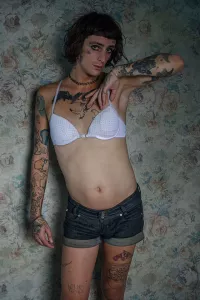
Abaixa Que é Tiro
Abaixa Que é Tiro is a portrait project by Camila Falcão (@camifalcao) about the transgender community in Brazil. Over the course of three years she has photographed and interviewed 59 Travesti, the feminine gender identity specific to Latin America. These people were assigned a male gender identity at birth but they identify with a female gender role, which they express through feminine dress, language and social roles. Some also go through body modifications such as taking hormones, breast implants and silicone injections. It is distinct from transsexuals, who undergo genital modification. They also differ from drag queens, who dress up for performance and entertainment. If the Travesti were to perform as drag queens they would do so in male attire (drag kings), because their chosen and thus actual gender identity is female, regardless of their bodily traits.
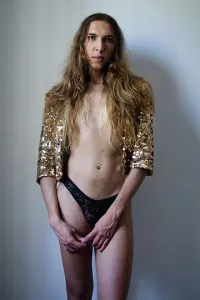
They prefer to use the term Travesti over transgender, because they are making a political statement with it. It used to be a derogatory term, now they claimed it back. The concept of chosen identity is a major point in the search for empowerment, against the simplistic western gender/sex taxonomy. Another consequence of the narrow view is that in order to change legal gender markers on official documents it is still required to undergo genital modification. To be allowed to have the surgery, the person must pass psychological tests and needs to be approved as a candidate, also to receive government sponsorship. The narrow definition of a ‘true transgender’ prevents a lot of transgenders/travesti from passing this test. Not all transgenders/ travesti want to have their genitals modified, but they do want to change their pronouns according to their preferred gender, which is not possible in this system. This way they remain exposed because of the discrepancy between their official documents on the one hand and their gender identity and expression on the other.
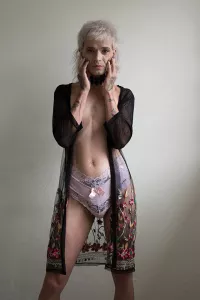
Falcão draws our attention to this delicate point exactly, the problematics of “passibility”. Passibility is determined by aesthetic patterns of cisgender beauty imposed by a patriarchal society, or in other words whether a trans person is visibly transgender or not. They need to fit all the criteria before they are considered a real transgender, and then they need to not look like one to be accepted in society. To “pass” is often seen as a privilege, because it lessens the risk of consequences such as not able to leave the house, getting fired, humiliated for using the wrong bathroom, refusal to be called by the right name/pronouns, etc. The pressure to “pass” causes dysmorphia, a profound state of unease, which causes emotional and/or physical distress. Thus, Falcão shows us people without surgical modifications, to promote the still controversial idea that they do not need to fit in the classical standards to be considered beautiful. She has photographed them in their homes in daylight, consciously, in order to dissociate these people from nightlife and the sex industry where many of them are forced to make a living.
